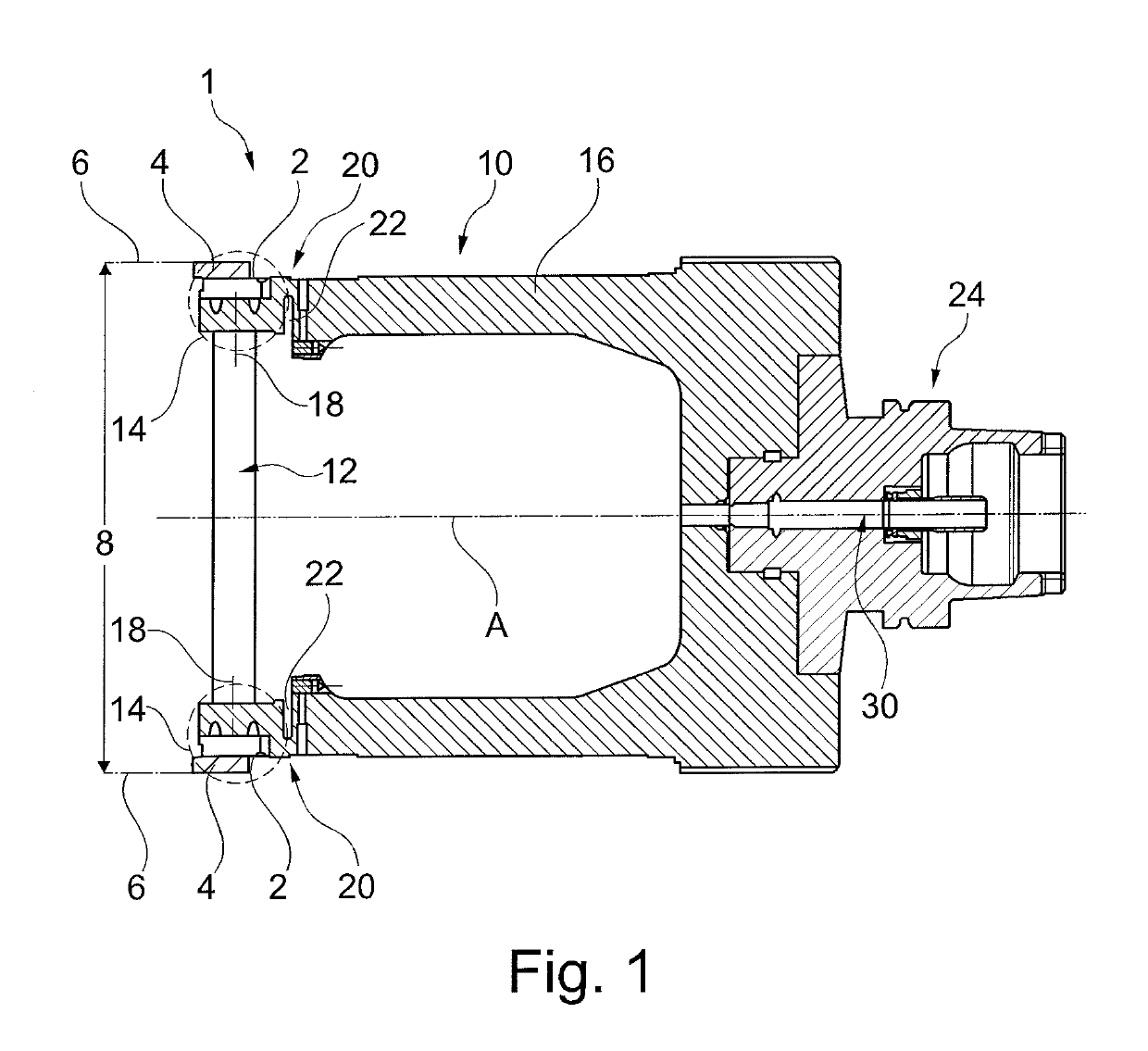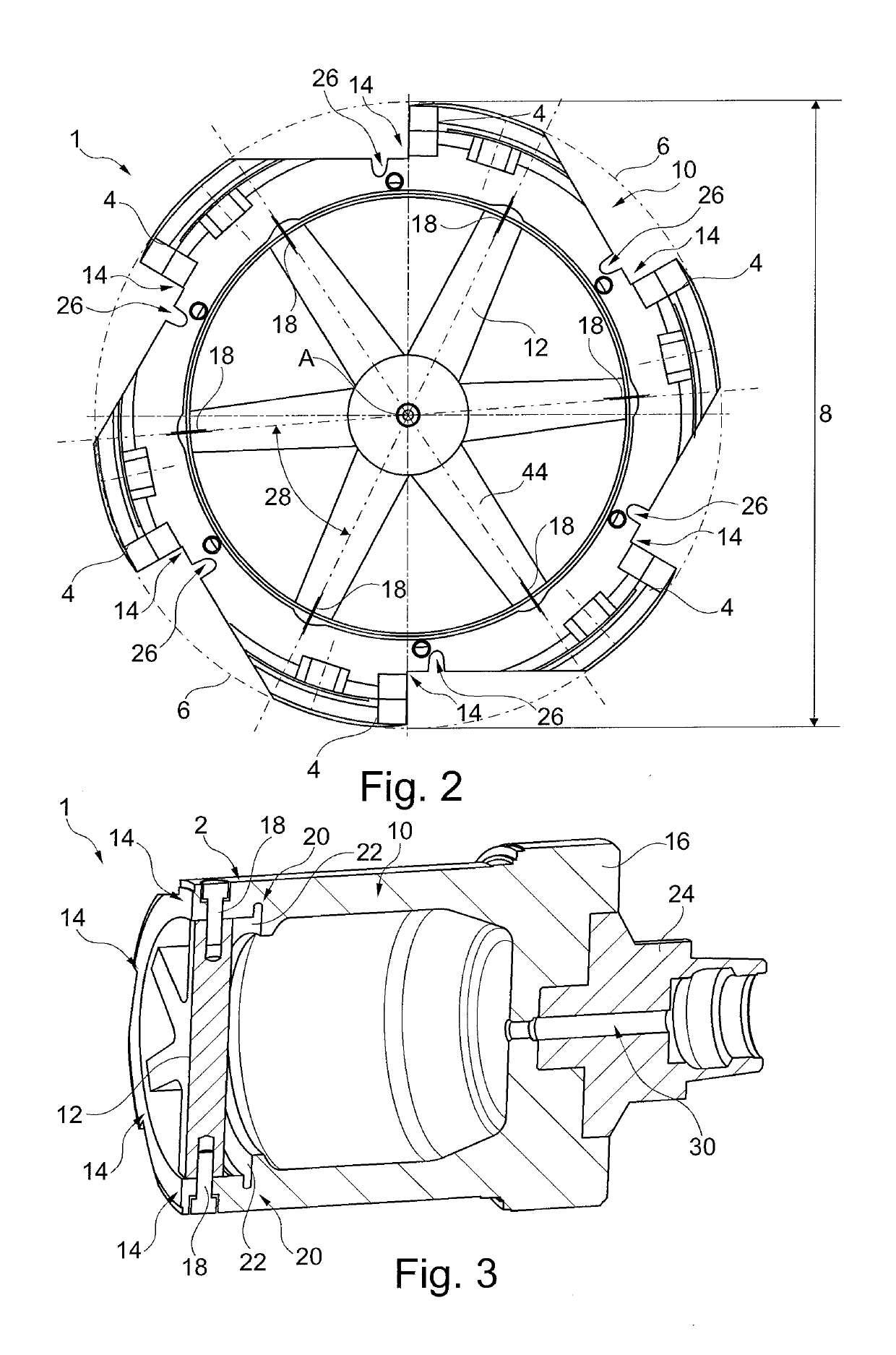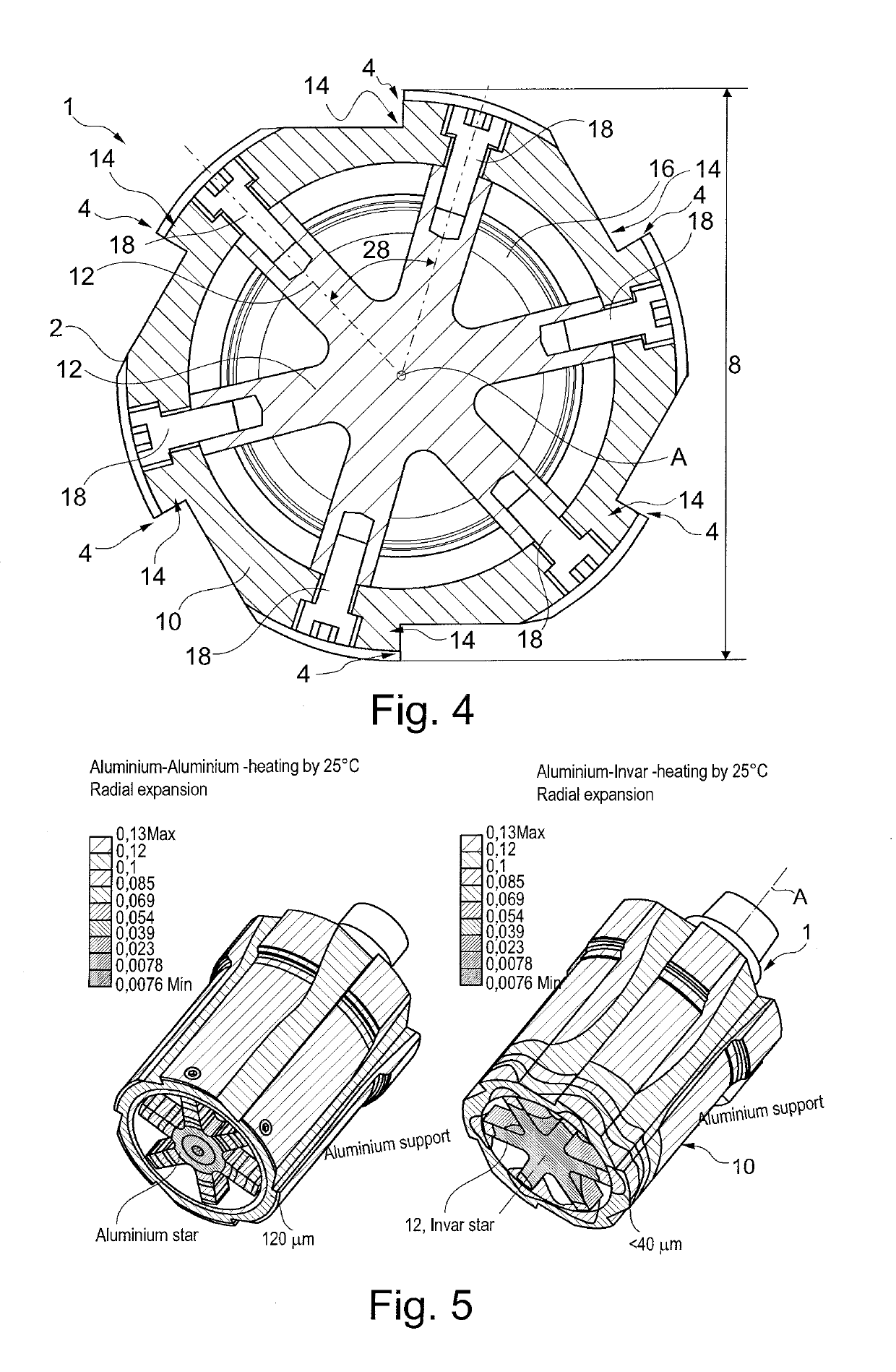Rotary tool
a technology of rotating tools and rotary tools, which is applied in the direction of turning machine accessories, chucks, manufacturing tools, etc., can solve the problems of more urgent problems such as time-consuming machining operations and large inside diameters of high-precision cutting, and achieve high thermal expansion and high machining performan
- Summary
- Abstract
- Description
- Claims
- Application Information
AI Technical Summary
Benefits of technology
Problems solved by technology
Method used
Image
Examples
first embodiment
[0054]FIG. 2 shows a front view of the rotary tool 1 according to the invention of the first embodiment from FIG. 1. In the front view the rotationally symmetric design of the rotary tool 1 is visible. More exactly speaking, the rotary tool 1 is divided into six circular portions / sections 28 of equal design which are arranged to be rotated at an angle of 60° relative to each other about the axis of rotation A and thus altogether define the entire cross-section of the rotary tool 1 over 360°.
[0055]In the rotary tool 1 the star-shaped corset structure 12 having six points 44 each pointing radially outwardly into the area 14 supporting the cutting edge 4 are arranged radially inside. In total, the rotary tool 1 comprises, in conformity with the number of points 44 and, resp., the number of circle segments 28, six cutting edges 4. Alternatively, the corset structure 12 may as well be in the form of a circular disk. The support structure 10 includes, when viewed in the circumferential di...
third embodiment
[0064]FIG. 8 illustrates a further, third preferred embodiment of a rotary tool 201 according to the invention. In this Figure, too, for a simplified description, those components of the parts of the afore-described other embodiments are correspondingly provided with similar reference numerals which are preceded by “2”. The rotary tool 201 again includes, in conformity with the foregoing embodiments, at its outer periphery 2 cutting edges 204 at cutting members 226 in the form of cutting inserts which are held in axially and radially adjustable cartridges 205. The cutting edges 4 are supported by two radially outer and diametrically opposed supporting areas 214 of a support structure 210. The support structure 210 in this third embodiment is not in the form of a circular cup but rather in the form of a cup having cut-off sides 216 which are diametrically opposed with respect to the axis of rotation. The cut-off sides 216 serve for improving the handling in logistics and storage of t...
PUM
| Property | Measurement | Unit |
|---|---|---|
| temperature | aaaaa | aaaaa |
| density | aaaaa | aaaaa |
| diameter | aaaaa | aaaaa |
Abstract
Description
Claims
Application Information
 Login to View More
Login to View More - R&D
- Intellectual Property
- Life Sciences
- Materials
- Tech Scout
- Unparalleled Data Quality
- Higher Quality Content
- 60% Fewer Hallucinations
Browse by: Latest US Patents, China's latest patents, Technical Efficacy Thesaurus, Application Domain, Technology Topic, Popular Technical Reports.
© 2025 PatSnap. All rights reserved.Legal|Privacy policy|Modern Slavery Act Transparency Statement|Sitemap|About US| Contact US: help@patsnap.com



